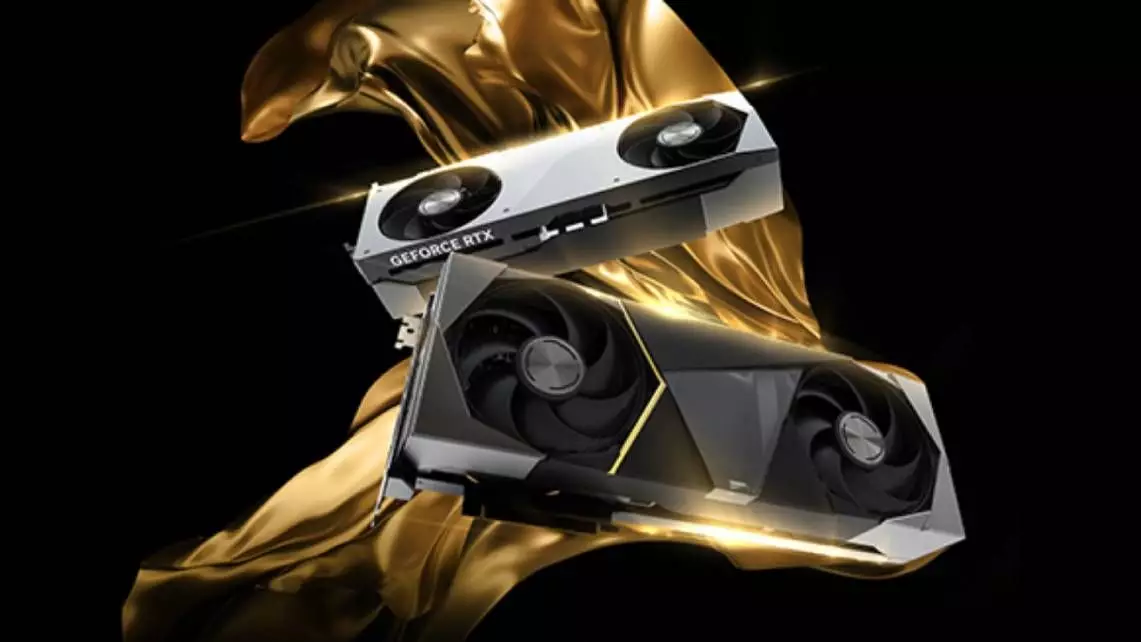As gamers look to enhance their PC setups, the announcement of the Nvidia RTX 50-series graphics cards at CES 2025 has undeniably stolen the spotlight. With their impressive specifications and high price points, these GPUs have sparked significant conversation among enthusiasts. The transition from the RTX 5080 to the RTX 5090 signifies not just a mid-range to high-end upgrade, but a paradigm shift in how we approach cooling solutions for powerful graphics cards.
The RTX 5090 is priced between $999 and $1,999, creating a noticeable leap in both performance and cost from its predecessor. This price hike is indicative of the technological advancements encapsulated within the new series. Given the immense capabilities of the RTX 5090, it’s not surprising that various manufacturers feel compelled to implement more advanced cooling solutions to sustain optimal performance during operation. Manufacturers like Gigabyte and MSI are at the forefront, pushing the boundaries of traditional cooling designs to accommodate the demands of this state-of-the-art hardware.
Gigabyte’s Aorus Master variant of the RTX 5090 exemplifies this shift with its innovative “Screen Cooling Plus” technology. This strategy incorporates an additional air-boosting fan, a clear response to the increased thermal output of the new GPU architecture. By placing the fan at the bottom of the card, they optimize airflow dynamics, showcasing a design that prioritizes efficiency alongside aesthetics. This configuration hints at the evolving nature of graphics card design—where performance metrics increasingly dictate form.
On the competitive edge, MSI has taken a more aggressive approach with its RTX 5090 32G Special Edition, which flaunts an impressive five STORMFORCE fans. This decision speaks volumes about the expectations for cooling potency in the face of formidable hardware. Each fan is meticulously engineered for superior airflow, reflecting a new standard for thermal management. MSI’s approach not only points to current market trends but might also earmark the future trajectories of GPU design as higher fan counts become commonplace.
Interestingly, while custom designs lean heavily into multi-fan setups, Nvidia’s Founders Edition of the RTX 5090 notably retains a dual-fan configuration. This discrepancy raises critical questions about cooling efficiency. Will this minimalist approach suffice for such a capable piece of technology, especially when compared to the robust cooling systems devised by AIB partners? Nvidia’s reliance on advanced features like DLSS 4 and the innovative use of Tensor cores might suggest a shift in strategy; perhaps the intention is for AI-driven enhancements to alleviate some of the thermal burdens typically managed by traditional cooling methods.
This juxtaposition between Nvidia’s streamlined design and the exaggerated cooling solutions adopted by third-party manufacturers is emblematic of an ongoing debate within the tech community regarding the balance between design aesthetics and raw functionality. While dual-fan systems were once the benchmark, the ambitious designs showcased by AIBs could redefine their role in high-performance GPU market offerings.
With 33% more cores than its predecessor, the RTX 5090 is poised to deliver significant leaps in performance that will undoubtedly reshape gaming experiences. The implications extend beyond gaming to various sectors, including data rendering and AI applications, where GPUs are vital for performance and efficiency. As such, the competitive race for superior cooling solutions will undoubtedly intensify, placing even further emphasis on thermal management’s role in maximizing component lifespans and user experiences.
The release of the Nvidia RTX 50-series is not merely an update to existing technology but rather a harbinger of transformation for the PC gaming landscape. The clash between minimalistic design and elaborate cooling setups will likely continue to inform consumer choices and manufacturer strategies alike. As we embrace these new advancements, gamers and tech enthusiasts alike must stay vigilant, adapting to the rapidly evolving specifications that accompany this new generation of graphics technology. The future looks brighter as we venture further into the high-performance GPU market, with expectations firmly set on enhanced capabilities and ingenious cooling solutions.


Leave a Reply